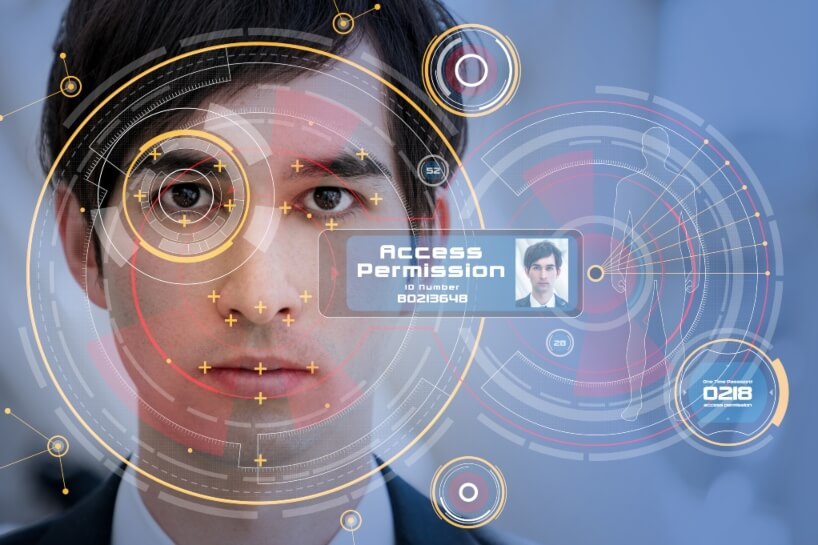What is Biometric Recognition?
Biometric recognition is an automated information system that allows the identification of a person or group of people based on physiological and behavioral characteristics.
Biometric Recognition: How it Works
Companies can implement biometric devices to recognize individual physical characteristics such as mask-wearing, and temperature, or identify an individual-specific measure such as an iris from up to 2 meters from the sensing device. Using these, and others, including fingerprint scanning, palm recognition, and document scanning, access to secured areas and equipment can be granted or restricted. These uniquely individual features are not easily replicated, lost, or stolen by criminals seeking to break into a company’s network or steal an individual’s identity.
However, since there are no universally accepted biometric standards, companies need to set policies on how much biometric data should be gathered and how it’s used, stored, and protected. IoTech Protect can assist with both the hardware and integration of software to keep such detection systems secure.
Biometric Recognition: Why it Matters
Biometric authentication methods use biometric characteristics or traits to verify users’ claimed identities when they access endpoint devices, networks, networked applications, or Web applications. Across a wide range of use cases in virtually any industry, the biometric authentication method may be used in one-to-one comparison mode (when the user enters a user ID), or one-to-many search mode (when the user simply presents his or her biometric characteristic, with no explicit claim of identity, and the system determines his or her user ID from a range of candidates).
What are the Main Characteristics on which Biometric Recognition is Based?
In general, the physiological characteristics are the most static, mostly unchanged over time, and can include:
- Fingerprint
- Height
- Hair color
- Size
- Physiognomy of the face
- Iris recognition
- Palm print
- Retina
- Hand geometry
What are the Goals of Biometric Recognition for Authentication?
The functioning of the biometric recognition systems varies according to the objective, which can be the verification or identification of a person:
- Identification: biometric recognition is done by matching the image, the data, and the information acquired in real-time with all the images and information present in an archive (one-to-many verifications). The biometric recognition system will associate identity by comparing and identifying the most similar and consistent physiological and behavioral characteristics between those in the archive and those collected in real-time. For example, palm recognition is a way to match a unique palm print to grant and limit access to sensitive storage areas within a company.
- Verification: a person declares his identity so his recognition becomes a verification process (one-to-one) that requires a match between the detected image (the acquired data) in real-time from the sensors and that present in an archive. For example, iris matching allows authorized payment processing or entrance to a secured venue.
The pandemic has impacted countries around the world, spurring them into adopting contactless payment methods such as facial biometrics.
Technology such as biometric payments has become widespread in other countries, due to wider acceptance of facial recognition and chips for e-passports, proof of vaccination, surveillance cameras, and law enforcement.
- Biometric detection systems show potential for expansion not only because they reach higher levels of protection than the password method, but above all because it opens the door to new services that are able to integrate security and provide a better user experience.
- According to Gartner, 50 percent of all business transactions and 20 percent of customer authentication events will be passwordless within the next three years.
Biometric Recognition: The Data
Biometric data can be used for a number of purposes, and that data must be secure. This is where IoTech Protect comes in: to help secure the channels for storing and managing this vast amount of data.
2017 saw over half a billion stolen accounts in the world and almost 17.8 million violated domains. Faced with the numerous violations of sensitive personal data, businesses now recognize the inadequacy of traditional passwords for employees and customers throughout the enterprise. Even as recently as 2017, the most commonly used password was 123456.
It is no surprise that the highest priority area of action regarding Cybersecurity is the security of data and systems connected to the network to make the digital world safer and more reliable.
As the use of biometric and scanning technology continues to grow, IoTech Protect will be there to protect the interface between sensitive data and integrate the technology that collects it.
Learn more about Cybersecurity.
Our cyber security team stands ready to help meet your needs, with:
- Integrating IoT devices with third-party and in-house applications
- Compliance with regulatory and industry standards and best
- Managing internal and external threats
- Maintaining online hygiene
- Performing analysis of cybersecurity infrastructure
- Structural assessments
- Customized cybersecurity services
- Project management and implementation
In-Source Cyber Protection is a comprehensive and agile platform, developed by our cybersecurity team, and recognized for its cybercrime detection and prevention experience. We enhance your existing cybersecurity resources and systems with an infrastructure you control and manage in-house. IoTech Protect will support development and execution of these long-range strategic plans, helping you adapt to the ever-changing threat landscape.
Contact Us to learn how we can help mitigate risk and protect your online presence.
You may also want to consider:
- Cyber Security Assessment (coming soon)
- What is Cyber Security?
- What is Advanced Physical Security?

